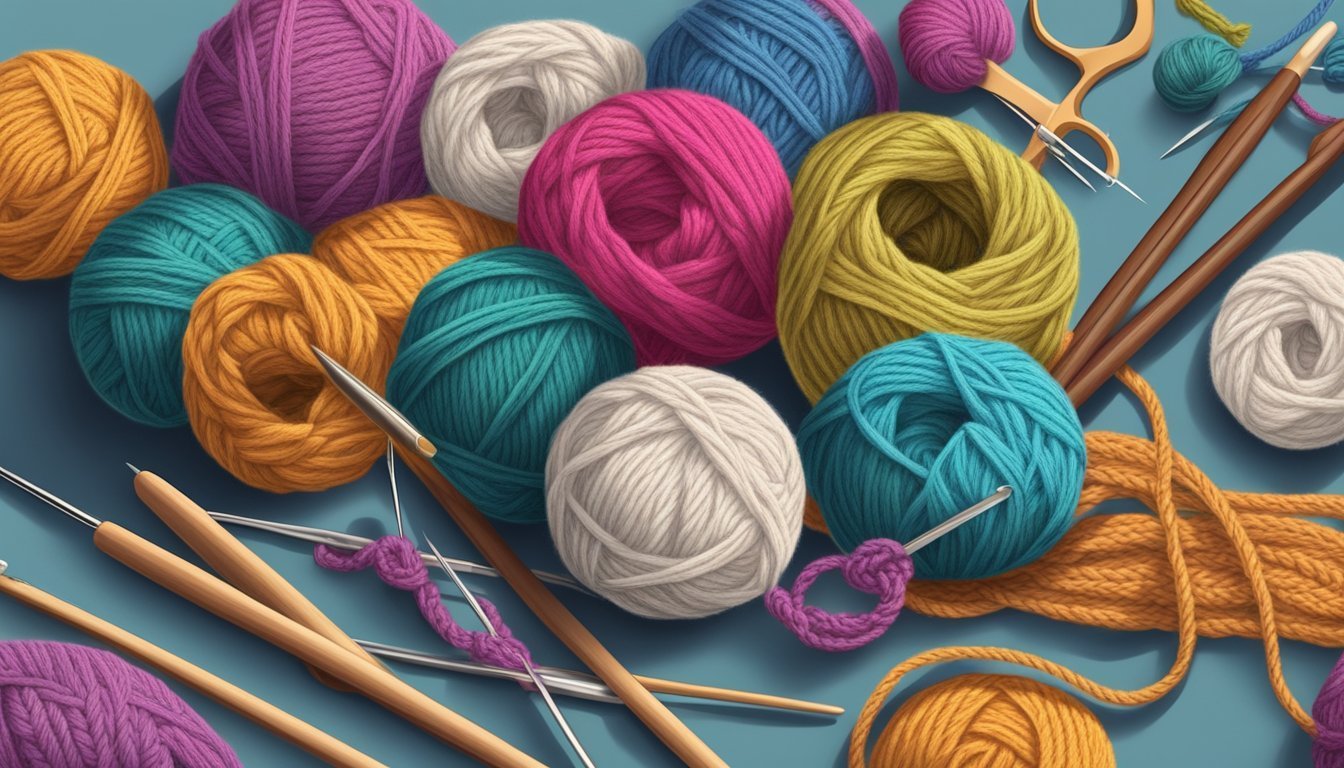Knitting and crochet are two beloved crafts that offer a world of creativity.
If you enjoy both, you might be wondering how you can merge these techniques into a single project.
Combining knitting and crochet can open up new possibilities in your crafting, allowing for unique textures and designs that highlight the strengths of each method.
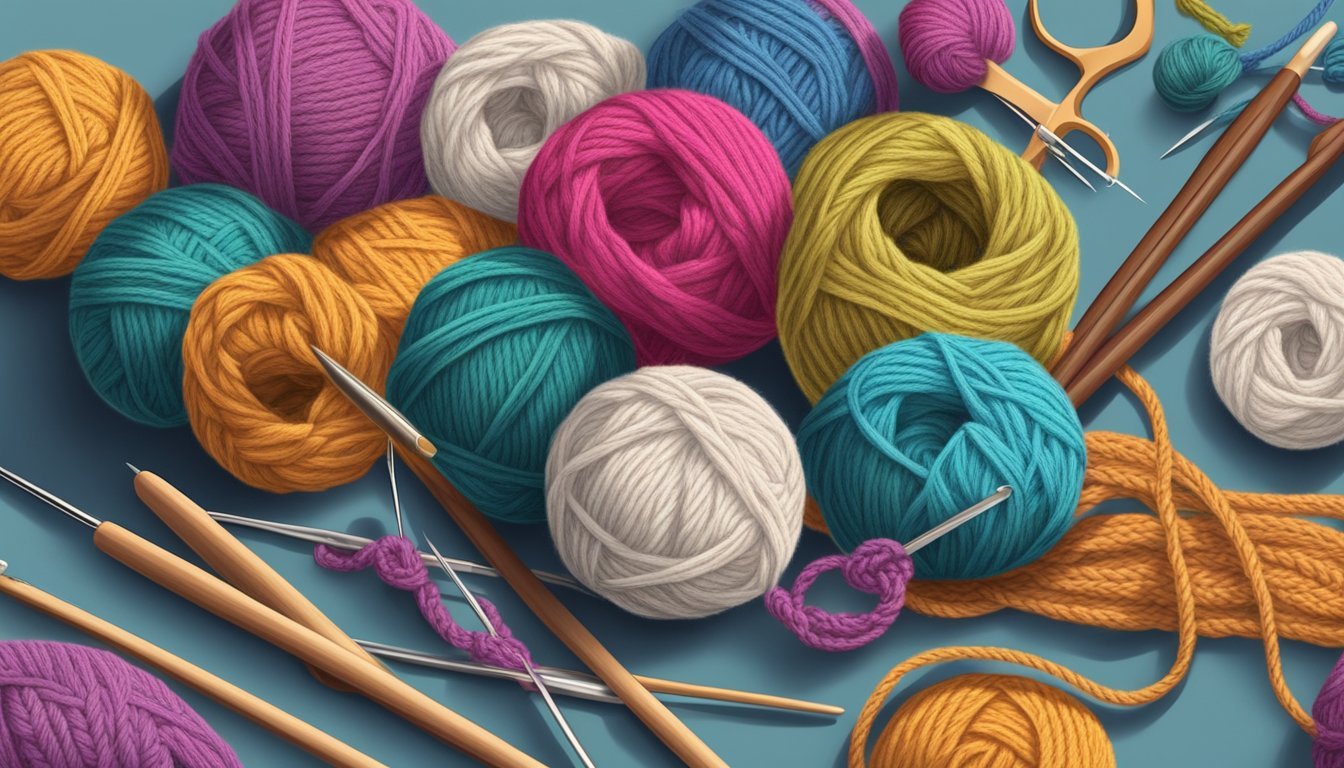
Whether you’re looking to add crochet borders to knitted pieces or want to seamlessly transition between the two, there are many ways to create stunning projects.
Exploring this combination can enhance your skills and result in beautiful, one-of-a-kind items that showcase your artistic flair.
Start with a Crochet Border
Starting with a crochet border is a great way to add a polished look to your knitting projects.
It’s simple and brings a nice finishing touch.
Begin by choosing your yarn color for the border.
This can be a contrasting or matching color—whatever fits your style.
Next, make sure your knitted piece is ready and laid flat.
To attach the crochet border, insert your crochet hook into the knit stitch.
Yarn over and pull up a loop, then yarn over again and pull through the two loops on the hook.
This creates a single crochet stitch.
Continue working single crochet stitches along the edge, moving into each knit stitch.
Pay attention to the corners; you may want to work extra stitches there to keep the border smooth.
This technique not only neatens the edges but also creates a lovely texture.
Feel free to experiment with different crochet stitches for your border.
Shell stitches or picots can add a unique flair to your project.
With practice, you’ll find your rhythm and style, making your finished piece truly yours.
Incorporate Granny Squares
Granny squares are a fun and versatile way to combine knitting and crochet in your projects.
You can create a patchwork effect by mixing knitted pieces with crocheted granny squares.
Start by crocheting a few granny squares in colors that complement your knitted sections.
Use a simple pattern for the squares, allowing them to stand out.
You can choose to join them together using slip stitches or other methods, like the join-as-you-go technique.
If you’re knitting a larger piece, consider adding granny squares as accents.
They can be stitched onto a knitted blanket or incorporated into the sides of a sweater.
This adds texture and visual interest.
Make sure to play around with different yarns.
Blending thicker, cozy yarns with lighter crochet threads can create a unique look.
Don’t hesitate to experiment with various joining techniques to find what works best for your project.
Enjoy mixing these two crafts to create something uniquely yours!
Knit Panels with Crochet Edging
Adding a crochet edging to your knit panels is a great way to enhance your project.
It gives your work a finished look and can add a pop of color or texture.
Start by knitting your panel to your desired size.
Once you’ve cast off, grab your crochet hook and yarn.
You’ll want to ensure the hook size matches your knitting needles to keep your stitches uniform.
Insert the hook into the knit stitches along the edge.
Begin with a single crochet stitch, which is simple to execute and creates a neat edge.
Continue working single crochets evenly across the bind-off edge.
If you reach a corner, you can make additional stitches to achieve a nice turn.
This method gives your project a polished feel while combining both techniques seamlessly.
Experiment with different crochet stitches for varied effects.
You can choose something simple or more intricate, depending on your skill level.
Playing around with colors can also make the edge stand out even more.
4) Crochet Appliques on Knitted Background
Using crochet appliques on a knitted background can elevate your projects.
It adds texture and a personal touch to your piece.
Start by selecting a knitted item, like a sweater or a cushion.
Then, choose crochet patterns that complement the knit design.
Simple shapes like flowers or hearts can work well.
To attach the appliques, use a blunt-ended darning or tapestry needle.
A simple running stitch can secure your pieces in place.
Remove any pins as you stitch to keep everything neat.
Make sure to use matching or contrasting yarns to highlight your appliques.
Experiment with different yarn weights for a unique look.
Just remember to keep your stitches consistent for a clean finish.
This technique allows for endless creativity.
You can mix colors and shapes to reflect your style.
Enjoy the process and let your imagination run wild!
5) Seamlessly Switch Between Techniques
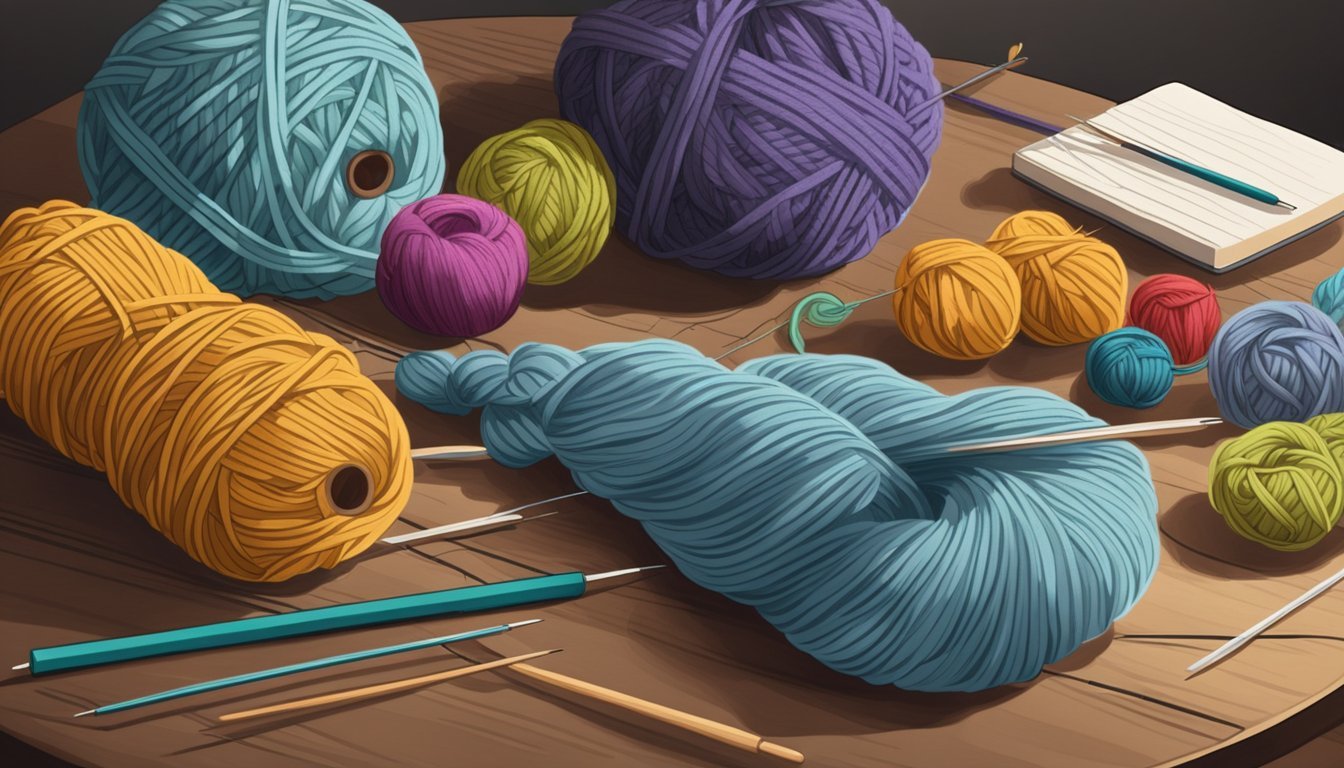
Switching between knitting and crochet in your project can add unique textures and designs.
To start, choose yarn and tools that match in size.
For example, using a size J crochet hook with US size 10 knitting needles keeps your stitches looking consistent.
When you’re ready to switch, make sure to finish your last stitch neatly.
For knitting, keep your work on the needles, then move to the crochet hook for the next row.
When crocheting, be mindful of the tension to maintain an even look.
To blend the two techniques smoothly, practice transitions on swatches.
This way, you can refine your methods without the pressure of a finished piece.
Experiment with simple patterns at first.
You might try using crochet for borders on a knitted item or vice versa.
The key is to stay relaxed and enjoy the process of combining these crafts.
With practice, you’ll transition seamlessly between knitting and crochet, creating beautiful projects.
Knit Top Half, Crochet Bottom

Combining knitting and crochet can create a unique and dynamic piece.
A popular approach is to knit the top half of your project and crochet the bottom.
Start by choosing a pattern that allows for this combination.
You might knit a sweater or a tunic while planning for a crochet skirt or hem.
When transitioning from knit to crochet, maintain comparable yarn weights.
This ensures that your stitches will match in size and create a cohesive look.
Consider your hook and needle sizes carefully.
For example, using a size J crochet hook and size 10 knitting needles both around 6mm can work well together.
Pay attention to the techniques used in the upper and lower sections.
The contrast between the drape of knit fabric and the structure of crochet can offer an interesting visual effect.
As you work, remember to keep your tension consistent.
This will help prevent any awkward puckering at the join where the two techniques meet.
Enjoy experimenting with your creative expression!
7) Create Mixed Yarn Textures
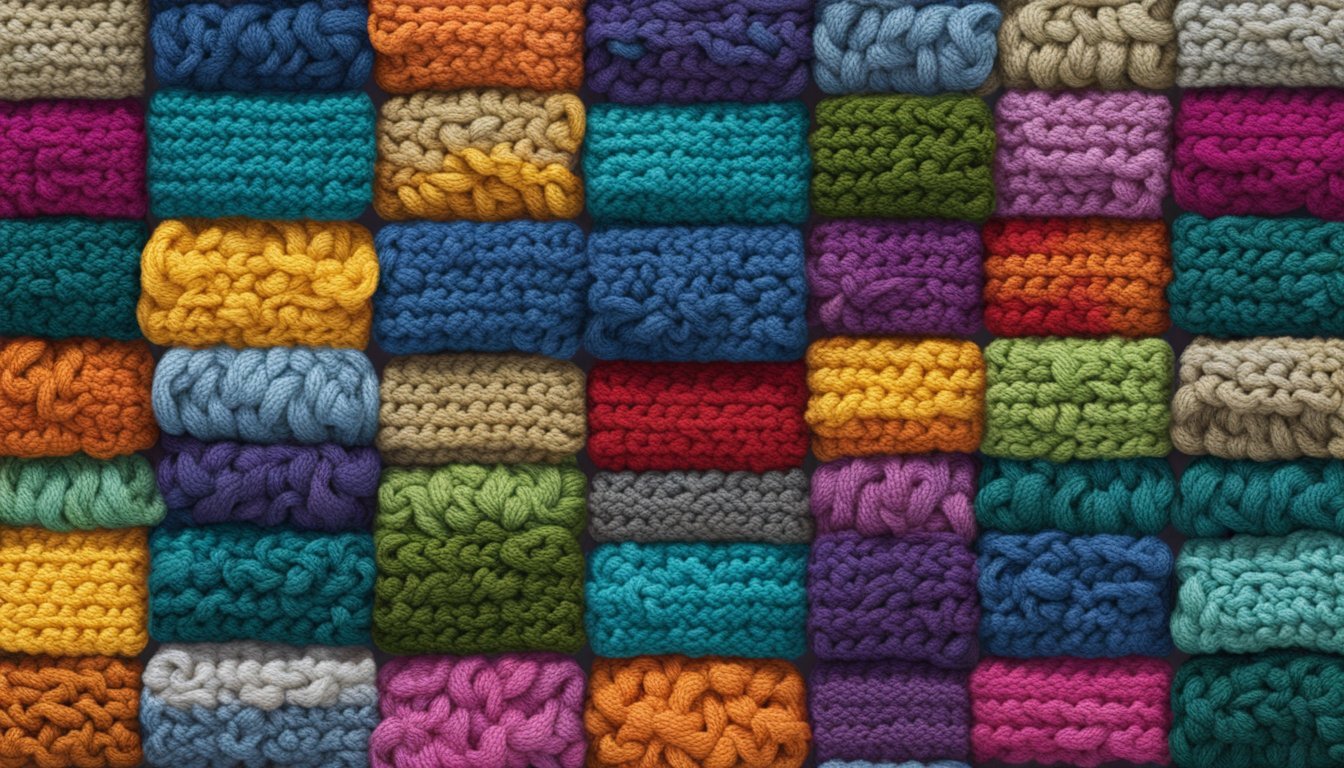
Mixing different yarn types can add an interesting dimension to your project.
Combining textures like cotton, wool, and acrylic can create a unique look and feel.
Start by choosing yarns with complementary textures.
For instance, pairing a soft, fuzzy yarn with a smoother one can enhance the visual appeal.
You might try a chunky yarn alongside a lace-weight option for a striking contrast.
Don’t be afraid to experiment with fibers.
Mixing natural fibers like bamboo or silk with synthetic ones can produce unexpected results.
The contrast can highlight your chosen stitch patterns.
Keep in mind that the gauge may vary with different yarn types.
Make a swatch to ensure your mixed textures work well together before diving into the full project.
This step saves time and ensures your efforts pay off.
Lastly, consider the color scheme while working with mixed textures.
Harmonizing colors can unify the diverse yarns, making your project feel cohesive and intentional.
Enjoy the creative process!
8) Use Crochet to Fix Knitting Mistakes
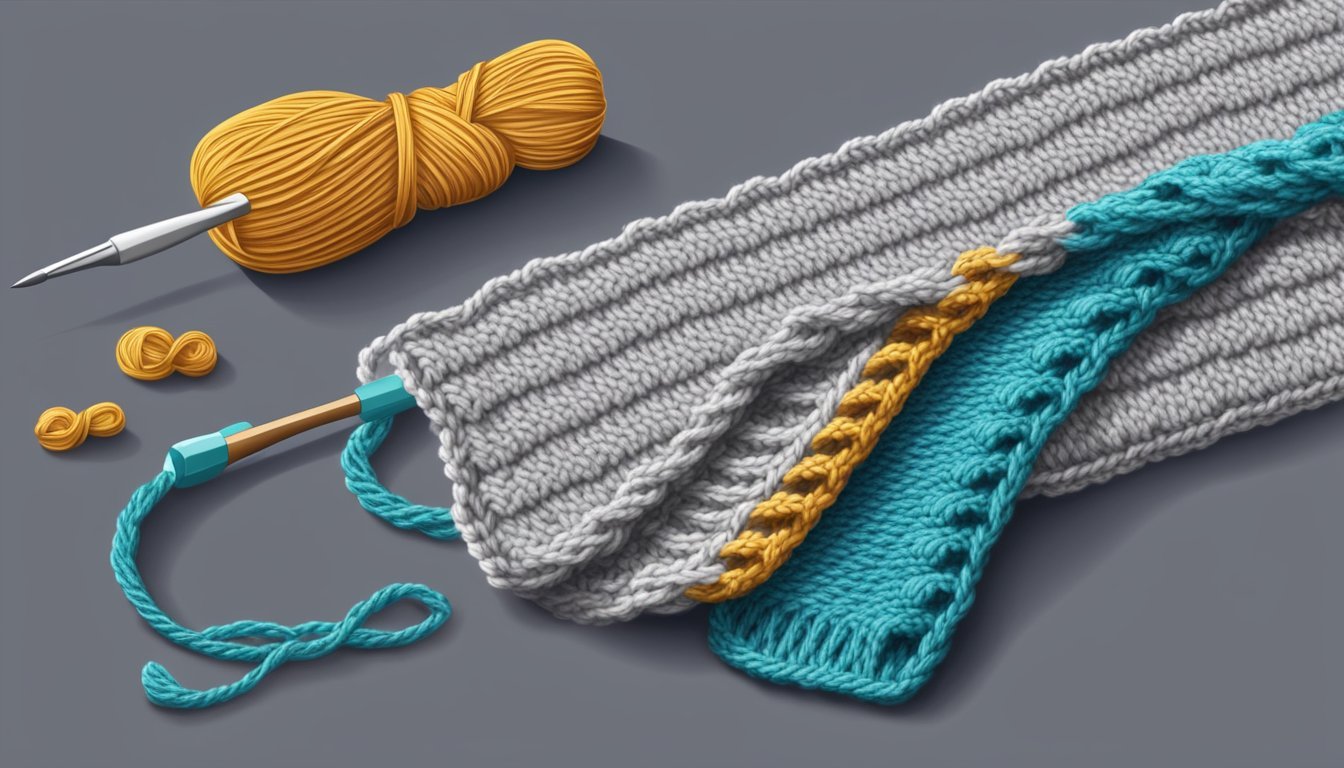
Mistakes happen, and knitting is no exception.
If you find a dropped stitch or a section that looks uneven, crochet can be a handy tool for quick fixes.
For a dropped stitch, you can use a crochet hook to pull the yarn back up through the fabric.
Simply pick up the loop and crochet it back into your work.
This maintains the integrity of your knit piece.
If a section is too tight or uneven, you can add a row of crochet stitches.
This not only smooths out the area but can also add texture or interest to your project.
Another option is to use crochet to reinforce edges.
If your knitting is fraying, adding a crochet border will help secure it, giving your project a polished look.
Crochet can also help transition between different techniques.
If you’re going from knitting to crochet seamlessly, using crochet stitches can create a beautiful transition without drawing attention to the change.
Remember, combining these techniques not only fixes mistakes but also adds unique character to your projects.
Don’t hesitate to experiment with crochet as a solution for those knitting challenges.
Join Knitted Blocks with Crochet
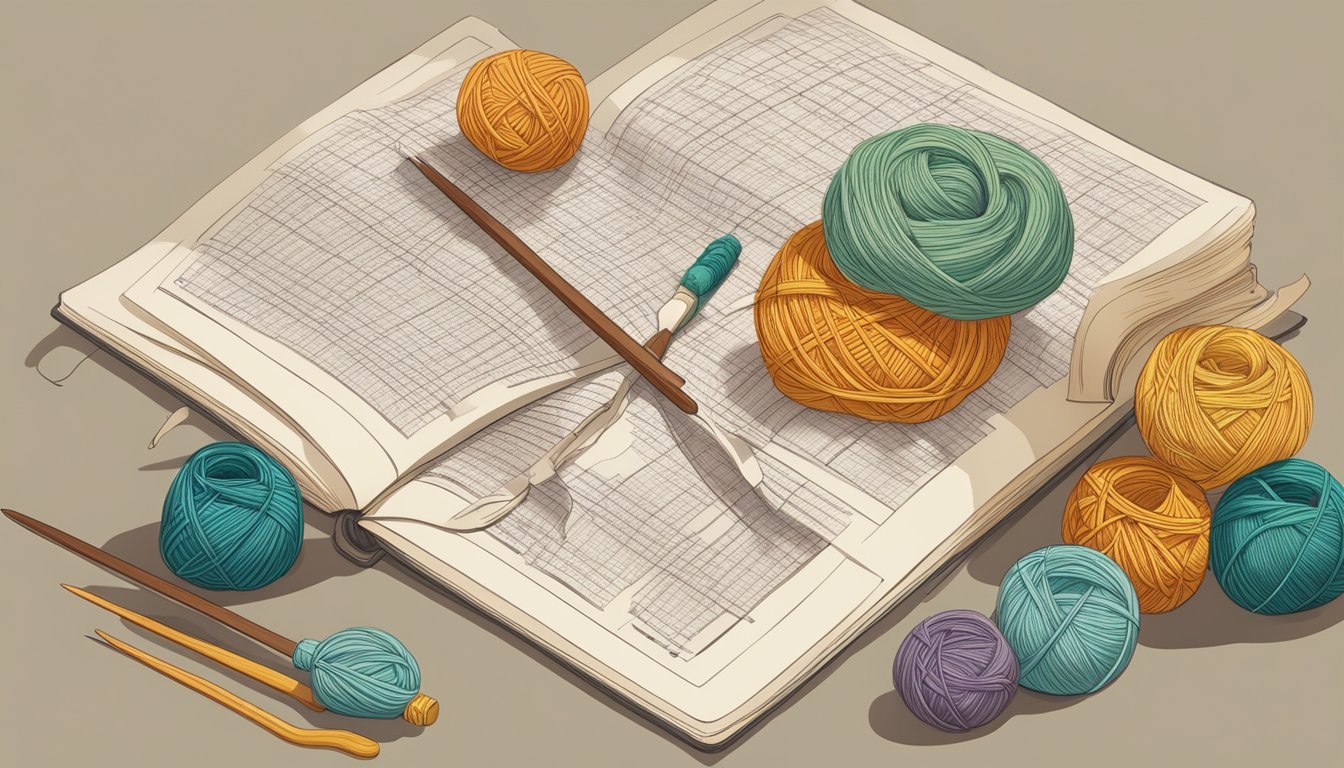
Joining knitted blocks with crochet is a fantastic way to combine your crafts.
This method not only looks great but also provides a sturdy finish.
Start by placing your knitted squares with the wrong sides facing each other.
This will hide any seams once you’re done.
Using a crochet hook, insert it through both blocks.
Wrap your yarn around the hook and pull it through, creating a slip stitch join.
Continue this process along the edges of your blocks.
Make sure to match corresponding stitches to maintain an even appearance.
The crochet stitches will create a lovely border and secure the squares together nicely.
You can experiment with different stitch styles for a unique look.
This technique opens up plenty of creative possibilities in your projects.
Combine Knitted Sleeves with a Crochet Body
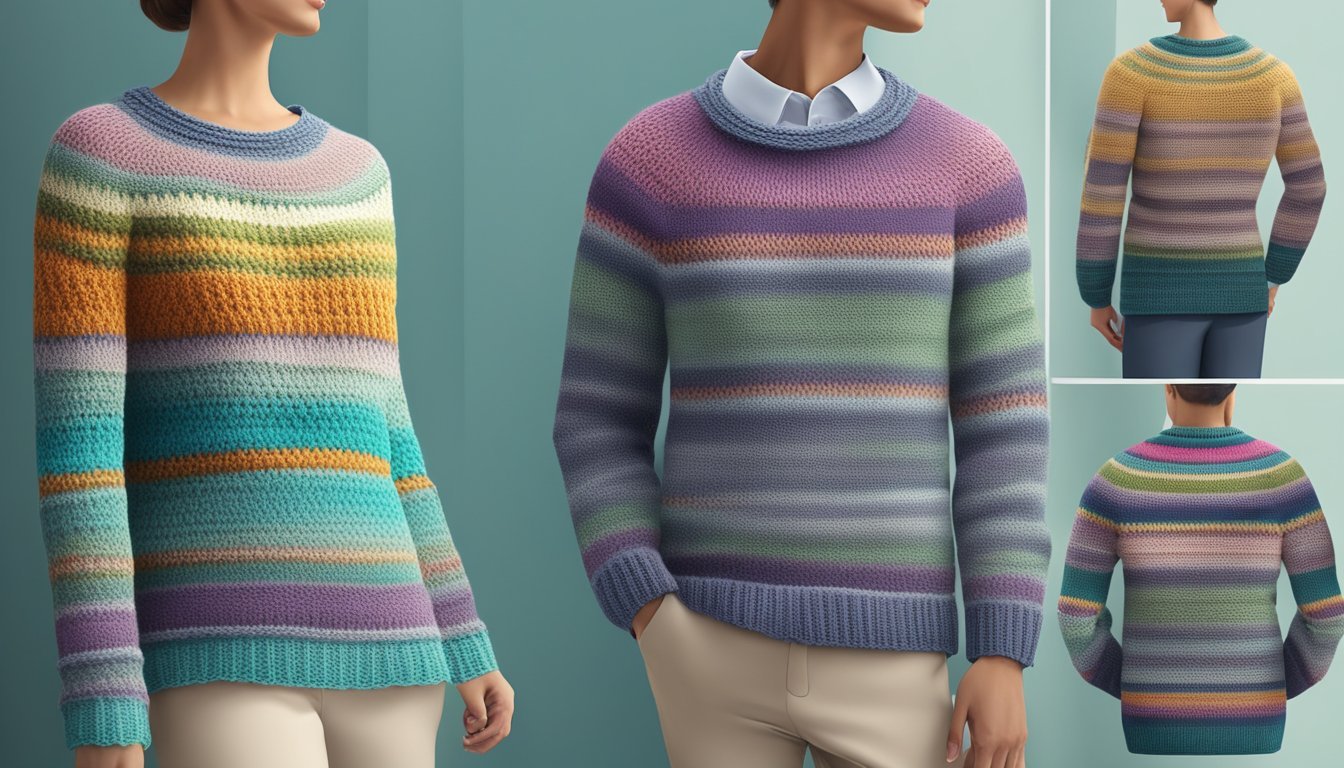
Combining knitted sleeves with a crochet body can create unique and stylish garments.
This method allows you to enjoy the best of both crafts.
Start by selecting a pattern for the crochet body.
Choose a stitch that complements the style you have in mind.
When it comes to the sleeves, opt for a knitted pattern that matches the body in both tension and drape.
Make sure to match the yarn weights when combining the two techniques.
This ensures a seamless look and feel.
If you use a thicker yarn for the crochet, it might make the knitted sleeves appear overly flimsy.
Consider the color scheme carefully.
Using similar colors or a gradient can help unify the piece.
Alternatively, contrasting colors can make a bold statement.
Once you finish the body, set it aside and knit the sleeves.
After that, attach them with a slip stitch or a flat single crochet for a neat finish.
This method will enhance the quality of your project and elevate your knitting and crochet skills.
Understanding Knitting and Crochet
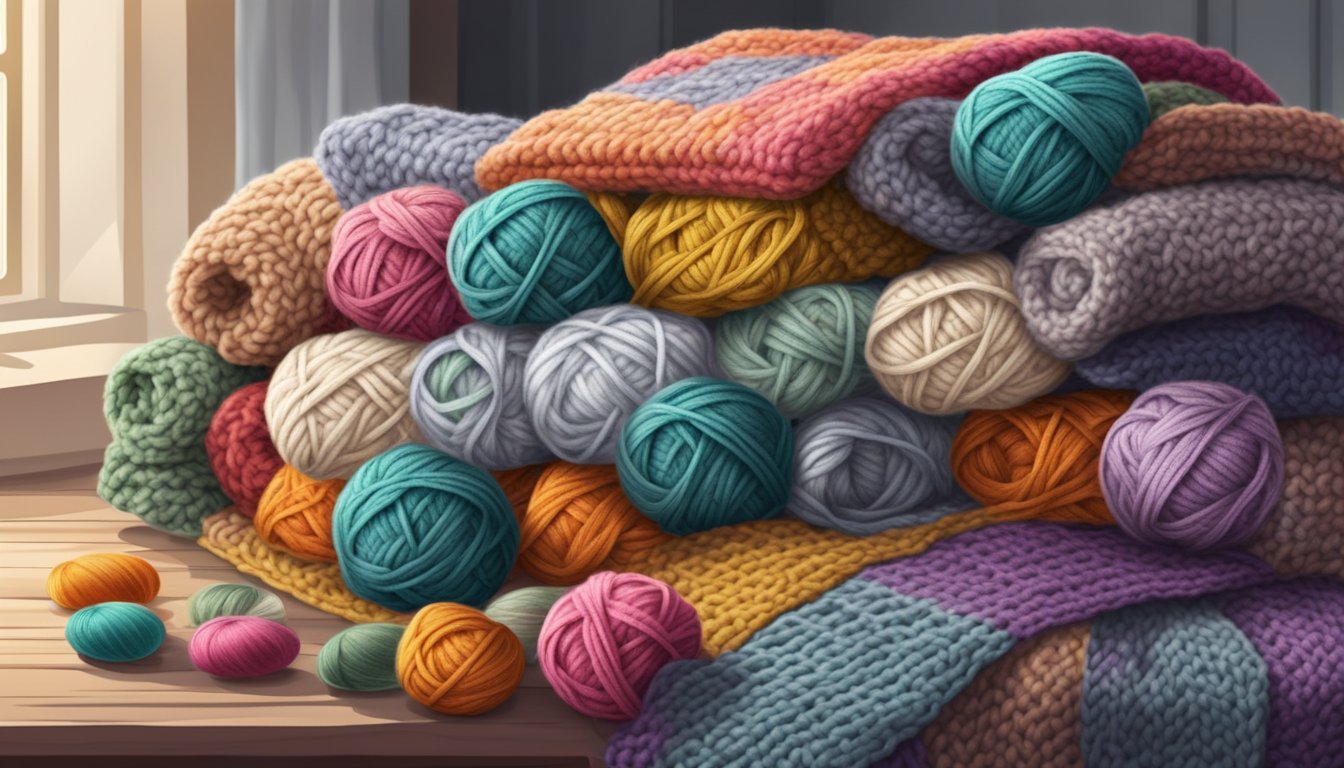
Knitting and crochet are two distinct textile techniques that can complement each other beautifully in your projects.
Each method has its own unique characteristics and can be used creatively together.
The Basics of Knitting
Knitting involves creating fabric by interlocking loops of yarn with needles.
The process is straightforward, but there are a few key elements to grasp:
- Tools: You’ll need knitting needles, which come in various sizes, and yarn. The size of the needle affects the stitch size.
- Stitches: The two primary stitches in knitting are the knit stitch and the purl stitch. Mastering these allows you to create various patterns.
- Tension: Maintaining consistent tension is crucial for uniform stitches. A tighter tension results in a firmer fabric, while looser tension creates a more relaxed appearance.
Knitting can be used for items like sweaters, scarves, and blankets, providing flexibility in design and texture.
The Fundamentals of Crochet
Crochet uses a single hook to manipulate yarn into loops, often creating intricate designs.
Here are the essentials:
- Tools: A crochet hook is used to pull yarn through loops. Hooks also come in different sizes, matching the yarn weight.
- Stitches: Basic stitches include chain, single crochet, and double crochet. Each stitch adds its texture and appearance to the finished piece.
- Versatility: Crocheted items can range from delicate doilies to sturdy bags. You can also easily adjust the size and shape.
Crochet allows for greater freedom in creating motifs and patterns, making it an excellent choice for decorative elements in mixed projects.
Bridging Techniques
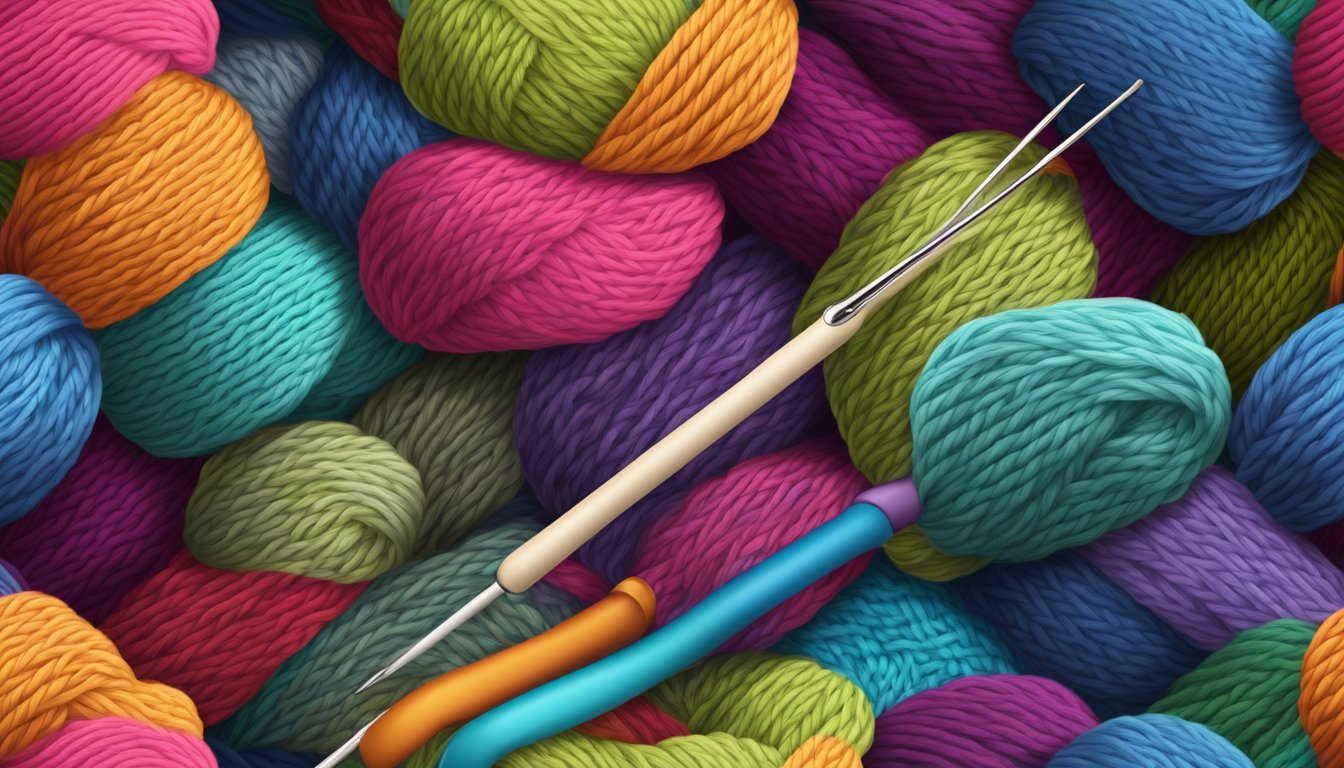
Combining knitting and crochet requires careful planning to ensure a seamless transition between the two techniques.
You’ll need to focus on transitioning between stitches and selecting appropriate materials.
Transitioning Between Knitting and Crochet
When you switch between knitting and crochet, attention to stitch size and gauge is crucial.
Use tools that complement each other; for example, if you’re using a size J crochet hook, opt for US size 10 knitting needles.
This way, your stitches will match in size, creating a more cohesive look.
To transition smoothly, consider the following:
- Create a foundation: If starting with knitting, cast off a few stitches before switching to crochet to add stability.
- Use a slip stitch: This technique can help comfortably link a crochet row to the end of your knitted piece.
- Experiment: Test different methods to see what feels right for your project.
Choosing the Right Yarn and Tools
Selecting the right yarn and tools is essential for a successful combination project.
Aim for yarns that have similar weights and textures to maintain consistency.
Mixing different yarn weights may lead to uneven sections.
When choosing tools:
- Use comparable sizes: Ensure your crochet hook size closely matches your knitting needle size.
- Consider fiber content: Blends with similar fibers can create harmonious finishes. For instance, using wool for both can help achieve similar drape and feel.
- Test swatches: Always make swatches with both techniques before starting. This will help you visualize how they work together.


